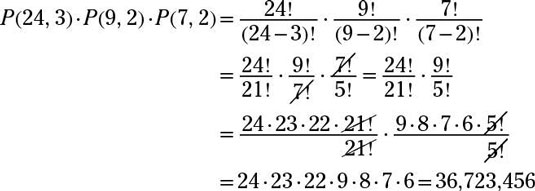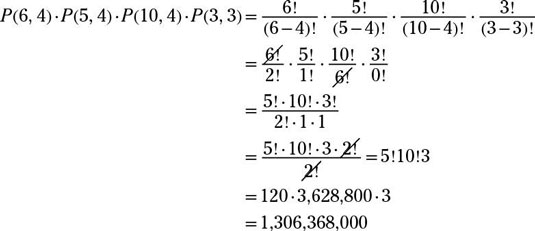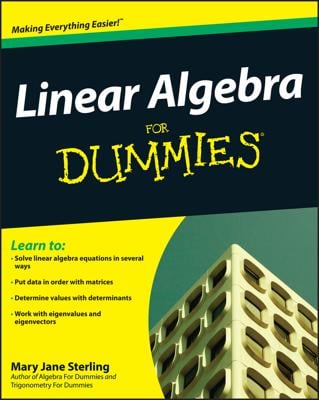Permutations involve taking a specific number of items from an available group or set and seeing how many different ways the items can be selected and then arranged.
For instance, if you choose three letters from the set {a, r, s, t} and arrange them as many ways as possible, you get the arrangements of {a, r, s}: ars, asr, ras, rsa, sar, and sra; the arrangements of {a, r, t}: art, atr, rat, rta, tar, and tra; and the arrangements of {a, s, t}: ast, ats, sat, sta, tas, and tsa; and the arrangements of {r, s, t}: rst, rts, srt, str, trs, and tsr.
The number of permutations is 24.
If you lose track of how to figure out all the “words,” you can list all these arrangements using a tree. Without a tree, just figure out a way to do a systematic listing.
You can find the number of permutations of n things taken r at a time with the formula

The n is the grouping or set that you’re pulling items from. The r is how many of those items you’re taking at a time. The notation P(n, r) or nPr is standard notation for indicating permutations.
Sample questions
1.How many permutations are possible if you choose three letters from a set of four?
24. Using the formula,

2.How many arrangements are possible if you choose any three letters from the English alphabet and then take any three digits from the digits 0 through 9 and use them for a password (assume that none is repeated)?
11,232,000. First, use the formula to find the number of arrangements of letters:

Then find the number of arrangements of digits:

Finally, multiply the two answers together: 15,600 x 720 = 11,232,000.
Practice questions
How many arrangements (“words”) are possible using three of the letters from the word stare?
How many arrangements (“words”) are possible using all five of the letters from the word stare?
How many different license plates can you form using three letters from the English alphabet (except the letters O and I and not repeating any), two digits from the digits 1 through 9 (without repetition), and then two letters chosen from the first seven letters in the alphabet (not two of the same letter)?
You have six blue books, five red books, and ten green books, and you decide to put four of each color on a bookshelf, keeping the same colors together. How many arrangements are possible?
Following are answers to the practice questions:
The answer is 60.
Use the permutation formula P(5, 3). Simplifying,

The answer is 120.
Use the permutation formula P(5, 5). Simplifying,

The answer is 36,723,456.
Use three different permutations all multiplied together. For the first three letters, use P(24, 3). The two digits use P(9, 2). And the last two letters use P(7, 2):

The answer is 1,306,368,000.
Use four different permutations all multiplied together. For the blue books, use P(6, 4); for the red books, use P(5, 4); and for the green books, use P(10, 4). You then have to account for what order the three colors are going to be in. Use P(3, 3). The books will be ordered within their colors and the groups of colors will be ordered. Whew! Here’s what the work looks like:


